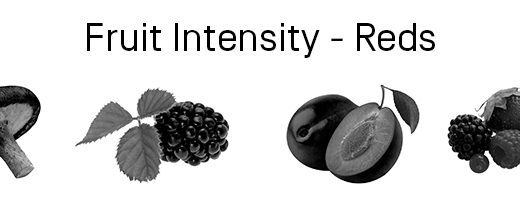There are countless reasons why we love wine. The stories behind each bottle, the vast array of flavors and aromas, the skill and artistry that goes into its creation – the list could go on and on. However, one of our favorite things is that truly great wine all comes down to one key thing: balance.
One of the main features that makes up the balance of any wine’s character is its acidity. But what exactly is acidity in wine, and how can we detect it? Also, how important is acidity, and just how acidic is wine in comparison to other foods and drinks? These are all questions we’re going to answer today, in our ongoing mission to help you get the most from your wine appreciation.
What is Acidity in Wine?
Acidity and acids are one of four key attributes of any wine – the others are (in no particular order) alcohol, sweetness, and tannin. Truly great wine needs a fine balance of each of these traits in order to achieve the best results – too much or too little of just one of them, and the wine isn’t as palatable as it should be.
All wines are acidic, in the sense that they all have a pH level which sits below the neutral side of the spectrum – usually between 2.5 pH to 4.5 pH. The acids present in wine usually come in one or more of the following types: malic acid, citric acid, and tartaric acid – and they’re what gives wine its distinctive tartness and sour taste on the palate.
Tasting Acidity in Wine
Take a moment to imagine other acidic foods or drinks; a glass of lemonade, for example, or a segment of fresh grapefruit. Even from imagining these flavors, your brain will cause your mouth to water and pucker up – that’s the natural reaction of our taste buds to the acids they encounter.
Next time you’re drinking a glass of wine, pay attention to and acknowledge this same sensation. By doing so, you should be able to recognize the level of acidity in each wine, and you’ll be able to identify certain wines (Gruner Veltliner, for example, or Pinot Grigio) which are more acidic than others.
In a simple sense, the opposite of acidity is sweetness. Many wines out there have a pH level which would indicate a high level of acidity, but would also have enough residual sugar in them to mask that sour taste. Interestingly, a slice of lemon and a glass of cola have an almost identical pH… but which one tastes more acidic? The lemon, of course, as the cola contains plenty of sugars which mask the effects of the acidity on our tongues.
The Importance of Acidity in Wine
Acids play a vital role when it comes to the character and quality of a wine, and not just in keeping the flavors and attributes balanced as discussed above. As wines age, acidity acts as a preservative, allowed the wine to mellow and round out without flattening or becoming dull to taste.
What’s more, acidic wines are generally better for pairing with foods. Why? Because the acids will allow the wine to ‘cut through’ fats, salty flavors, and sweet ones alike, allowing you to pair wines like Sauvignon Blanc or Champagne with a massive range of different flavors and ingredients.
Climate and Acidity
The level of acidity in any wine can be the result of the climatic conditions the grapes were grown in, meaning that certain wine styles may be very tart in cooler climates, and far more mellow in warmer ones.
Generally speaking, wines with a shorter ripening season or cooler temperatures in general will produce considerably sharper and more acidic wines than those with long, warm seasons.
One great example of this would be Champagne – it’s a particular damp and cool part of France, which results in the acidic Chardonnay and Pinot Noir grapes ideal for making the iconic sparkling wine. The reason for this is due to the fact that ‘greener’ grapes – that is, grapes which have not fully ripened or which have maintained their acidity due to cooler climates – pack in a greater acidic punch than those which have reached full plumpness and ripeness. Just compare, for example, a Cabernet Sauvignon from the cooler Bordeaux region of France, and a lush, fruit-forward wine made from the same grapes grown in sunny California.
So, there you have it – a brief rundown of what acidity in wine means, and why it’s so important when it comes to taste and quality. Now, go out there and enjoy some great wine!





